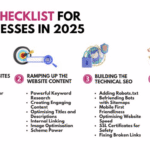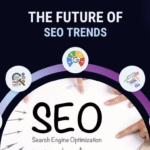Introduction
Search Engine Optimization (SEO) has two main pillars: on-page SEO and off-page SEO. While backlinks and authority building (off-page) are important, the foundation of good rankings always begins with on-page SEO.
In 2025, Google’s algorithms are smarter than ever. They reward websites that provide value, have well-structured content, and deliver an excellent user experience. This means your website’s titles, content, design, and internal structure must be fully optimized.
This article provides a step-by-step on-page SEO checklist to help you rank higher on Google and attract more organic traffic.
1. Optimize Title Tags
Your title tag is the first thing users (and search engines) see. It should include your target keyword and encourage clicks.
Tips:
-
Keep it under 60 characters.
-
Place the main keyword near the beginning.
-
Add a power word or number for better CTR (e.g., “Top 10,” “Ultimate Guide”).
✅ Example: “On-Page SEO Checklist 2025: 12 Steps to Higher Google Rankings”
2. Write Compelling Meta Descriptions
Meta descriptions don’t directly impact rankings, but they influence click-through rates (CTR), which does.
Tips:
-
Keep it under 155–160 characters.
-
Include your primary keyword.
-
Make it engaging with a call-to-action.
✅ Example: “Boost your rankings in 2025 with this ultimate on-page SEO checklist. Optimize titles, headers, URLs, and more for higher Google visibility.”
3. Use SEO-Friendly URLs
Short, clean, keyword-rich URLs perform best.
Best practices:
-
Avoid long strings of numbers or symbols.
-
Use hyphens (-) instead of underscores (_).
-
Keep URLs short and descriptive.
✅ Example:
❌ mywebsite.com/article?id=12345
✅ mywebsite.com/on-page-seo-checklist
4. Optimize Header Tags (H1, H2, H3)
Header tags make your content easy to read and help search engines understand structure.
-
H1: Should contain your main keyword (only one H1 per page).
-
H2 & H3: Use for subtopics, include secondary keywords.
-
Keep headers clear, logical, and scannable.
✅ Example:
H1: On-Page SEO Checklist for 2025
H2: Optimize Title Tags
H2: Use Header Tags Properly
5. Keyword Placement & Density
Keywords still matter, but keyword stuffing is outdated. Instead, focus on natural use.
Where to place keywords:
-
Title tag
-
First 100 words of the content
-
At least one H2 heading
-
Throughout the article naturally
-
Meta description & URL
Use LSI (Latent Semantic Indexing) keywords—related terms Google associates with your topic.
6. Optimize Images for SEO
Images make your content engaging but can hurt rankings if not optimized.
Tips:
-
Use descriptive file names (e.g., on-page-seo-checklist.jpg).
-
Add alt text with keywords.
-
Compress images to improve page speed.
-
Use WebP format for faster loading.
7. Internal Linking Strategy
Internal links help Google crawl your site and keep users engaged.
Best practices:
-
Link to related articles using keyword-rich anchor text.
-
Make sure every important page is reachable within 3 clicks.
-
Avoid overloading a single page with too many links.
✅ Example: Instead of writing “click here,” use “see our complete SEO guide for beginners.”
8. External (Outbound) Links
Linking to authoritative sites builds trust with Google.
Tips:
-
Link to reputable sources (.gov, .edu, high-authority blogs).
-
Use outbound links sparingly but strategically.
-
Always open external links in a new tab.
9. Mobile Optimization
In 2025, mobile-first indexing is the norm. If your site isn’t mobile-friendly, rankings will suffer.
Checklist:
-
Responsive design.
-
Large, readable fonts.
-
No intrusive pop-ups.
-
Fast mobile loading speed.
10. Improve Page Speed
Google prioritizes websites that load fast. Slow pages = higher bounce rates.
Tips:
-
Compress images and use lazy loading.
-
Minify CSS, HTML, and JavaScript.
-
Use a Content Delivery Network (CDN).
-
Choose reliable hosting.
👉 Aim for a loading speed under 2.5 seconds.
11. Schema Markup (Structured Data)
Schema helps Google understand your content better and increases chances of rich snippets (stars, FAQs, event details, etc.).
Examples of schema types:
-
Article
-
Product
-
Review
-
FAQ
-
Local Business
You can add schema manually or with plugins like Yoast SEO or Rank Math.
12. Content Quality and Readability
Content is still king, but quality > quantity in 2025.
Tips:
-
Write in-depth, valuable content (1,000–2,000 words).
-
Use short paragraphs and bullet points.
-
Add images, infographics, and videos for engagement.
-
Ensure content answers user intent fully.
13. Optimize for Featured Snippets
Featured snippets (position zero) are gold in SEO.
How to optimize:
-
Use question-based headings (H2/H3).
-
Answer questions in 40–60 word paragraphs.
-
Use numbered or bulleted lists.
✅ Example: “Steps for On-Page SEO: 1. Optimize titles, 2. Write meta descriptions, 3. Use headers…”
Final Thoughts
On-page SEO in 2025 is about clarity, structure, and user experience. By optimizing your titles, meta descriptions, headers, URLs, images, and internal links, you build a solid foundation for higher Google rankings.
Remember: even with backlinks and social signals, a poorly optimized website won’t perform well. Use this on-page SEO checklist consistently, and you’ll see steady improvements in visibility, traffic, and conversions.






Leave a Reply